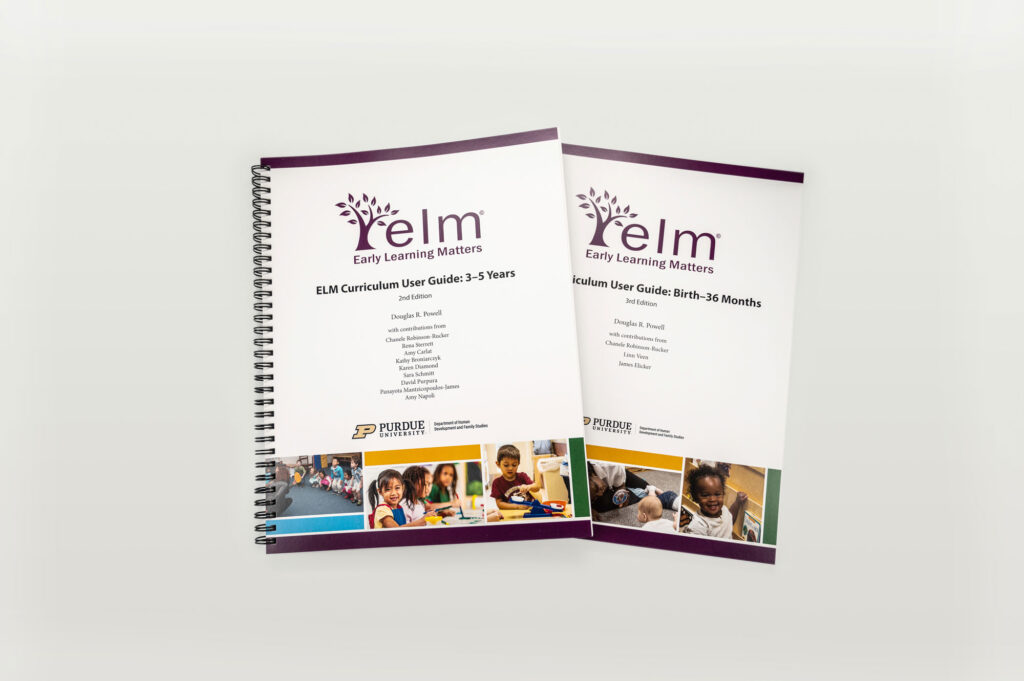
ELM’s User Guides are packed with information and examples of how to successfully use the curriculum. Each Guide summarizes research on what’s important to promote during the early years and describes effective classroom practices. There are sequence charts of skills and learning goals emphasized across a 50-week period. There is one User Guide for each of ELM’s two age groups: birth-36 months and 3-5 years.
ELM also provides six online training lessons on key parts of the curriculum, such as ways to make the most of activity plans and approaches to effectively supporting differences in children’s development and learning. Forthcoming videos feature feature child development experts and examples of effective classroom practices focused on areas promoted in the ELM Curriculum.
There are age-appropriate checklists for observing classroom staff use an ELM activity. There are samples of a completed checklist and how the checklist can be used in a coaching session with classroom staff.
Each User Guide is rich in professional development opportunities. There is background information on each skill promoted by ELM. For example, there is a description of signs of distress in children written by a child and adolescent psychiatrist for the ELM Curriculum User Guide: 3-5 Years. There also are lists of actions that staff may take to strengthen their understanding of each area. Staff are encouraged to take a close look at how an activity in one area, such as physical development, can also promote children’s understanding of another area, such as social development.
Descriptions of each foundation skill in the two User Guides include a summary of pertinent NAEYC program standards and accreditation criteria. There are links to corresponding content in Virtual Laboratory School courses. ELM’s online training lessons include focused attention to NAEYC program accreditation criteria.
